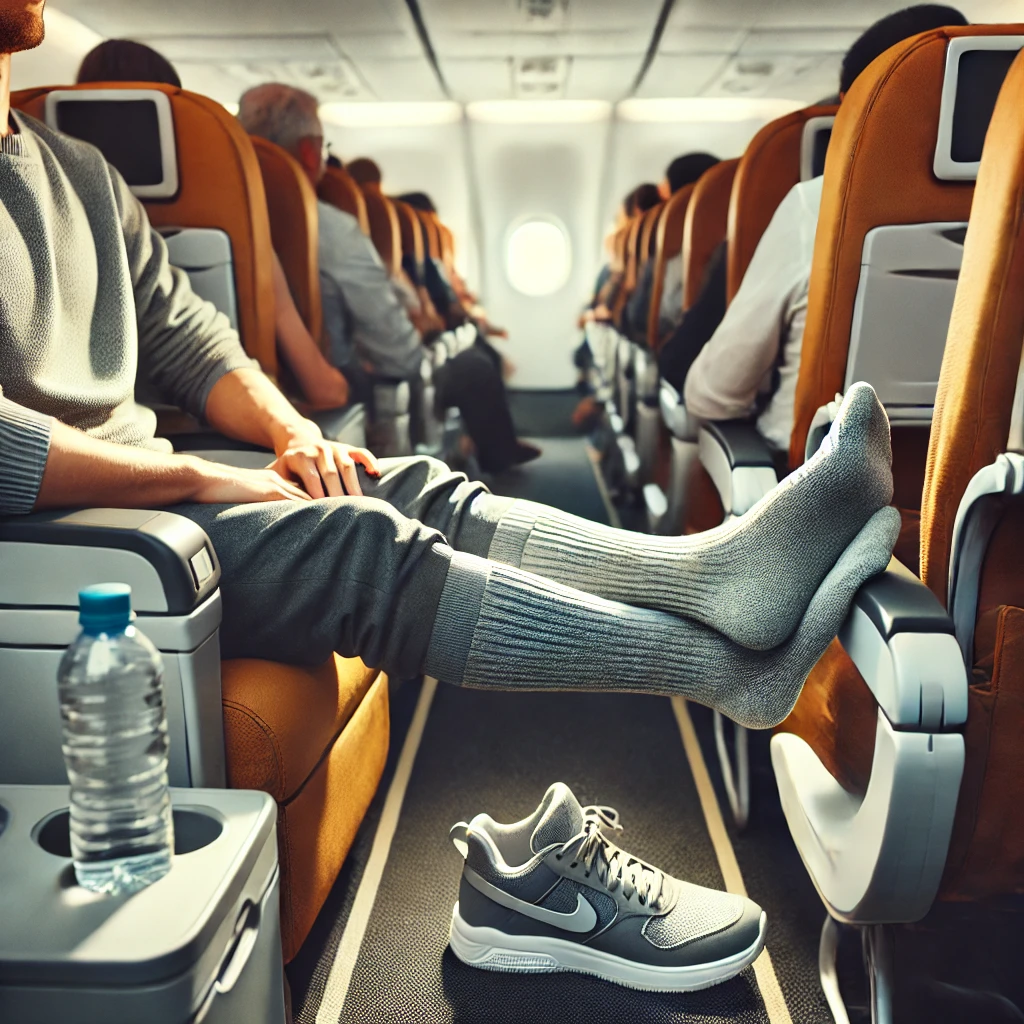Unlock the mystery of pronation to enhance foot health and athletic performance. Explore the types, implications, and corrective measures for pronation, tailored for runners and athletes.
Introduction
Pronation is a critical yet often overlooked aspect of our foot mechanics, playing a pivotal role in how we walk, run, and stand. It refers to the natural inward roll of the foot during movement, essential for proper shock absorption and weight distribution. This guide illuminates the nuances of pronation, its types, and its impact on overall foot health, aiming to equip you with the knowledge to prevent injuries and optimize performance.
Table of Contents
What does it mean?
Pronation is a biomechanical mechanism that enables our feet to adapt to different surfaces during locomotion. When we walk or run, our feet go through three phases: 1) heel strike, 2) midstance, and 3) toe-off. During the midstance phase, the foot pronates as the arch collapses, allowing for shock absorption and stability.
Classification
Neutral Pronation
- This is often considered the ideal foot movement pattern during walking or running.
- It involves a moderate inward roll of the foot, which helps evenly distribute the forces exerted on the foot and lower leg while in motion.
- This pattern provides excellent shock absorption, reducing the impact of each step on the body.
- It also promotes stability by maintaining proper alignment of the foot and ankle.
- People with neutral pronation typically have a balanced and efficient gait, reducing the risk of common foot and lower limb injuries.
Overpronation
- It occurs when the foot excessively rolls inward during the walking or running gait cycle.
- This exaggerated inward motion can lead to the collapse of the arch, causing it to flatten more than what is considered normal.
- It can result in biomechanical imbalances, as the foot’s excessive inward movement can affect the alignment of the ankle, knee, and hip.
- Individuals with overpronation may experience instability and an increased risk of injuries, such as shin splints, plantar fasciitis, or stress fractures.
- Proper footwear with added arch support and motion control can help alleviate issues.

Underpronation (Supination)
- Underpronation, also known as supination, is characterized by the foot rolling outward instead of inward during the gait cycle.
- This outward rolling motion places excessive pressure on the outer edge of the foot, particularly the little toe side.
- Underpronation leads to limited shock absorption because the foot doesn’t distribute forces evenly, making the impact of each step less effectively absorbed.
- People with underpronation may experience instability as their gait lacks the natural inward motion needed for balance.
- This condition increases the risk of injuries, such as ankle sprains, Achilles tendon issues, and stress fractures, as the foot is less adaptable to uneven surfaces.
- To address underpronation, individuals may benefit from cushioned and supportive footwear that helps absorb shock and reduce the risk of injuries.
Understanding the Implications
Understanding pronation is essential for every individual, especially for athletes and runners, as it significantly affects foot health and performance. Consider the following implications of incorrect pronation:
Injury Risk
| Incorrect pronation, whether it’s overpronation or underpronation, can significantly increase the risk of various foot and lower limb injuries. Common injuries associated with incorrect pronation include plantar fasciitis, shin splints, Achilles tendonitis, stress fractures, and more. |
| Regular monitoring of your pronation and choosing the right footwear can help minimize the risk of these injuries by providing the necessary support and alignment during physical activities. |
| It is essential to pay attention to early signs of discomfort or pain and take proactive measures to address pronation-related issues. |
Shoe Selection
| Understanding your specific pronation type is essential for selecting appropriate footwear that offers the required support and stability. |
| Overpronators benefit from motion control shoes, which are designed to limit excessive inward foot rolling and provide enhanced stability. |
| Underpronators (supinators) typically find cushioned shoes more comfortable, as they offer additional shock absorption and support for the outer edge of the foot. |
| Choosing the right shoes based on your pronation type can significantly improve comfort and performance while reducing the likelihood of discomfort and injuries. |
Orthotic Intervention
| Individuals with severe or persistent pronation issues may require orthotic interventions to correct alignment and reduce strain on the feet and legs. |
| Orthotic solutions may include custom insoles, orthopedic footwear, or arch supports tailored to your specific needs. |
| Consultation with a podiatrist or orthopedic specialist is essential for a personalized assessment and recommendation regarding orthotic interventions. |
| These orthotic measures can play a crucial role in providing long-term relief and preventing further complications associated with incorrect pronation. |
Assessing the Problem
To determine your pronation type accurately, you can utilize various methods:
Wet Test
- For a simple at-home assessment, wet your feet and then stand on a flat, dry surface.
- Observe the footprint left behind to determine your pronation pattern.
- In the case of neutral pronation, you will notice an inward curve along the inner edge of your foot where your arch is lifted and the ball of the foot and heel are connected.
- This method offers a basic indication of your pronation type and can be a starting point for self-assessment.
Footwear Wear Patterns
- Examine the wear patterns on the soles of your shoes to gain insights into your pronation tendencies.
- Overpronation typically results in more wear on the inner edges of the shoe soles, as the foot rolls excessively inward during each step.
- Conversely, underpronation (supination) tends to exhibit more wear on the outer edges of the soles due to the foot’s outward rolling motion.
- While this method provides a general idea of your pronation, it is not as precise as other assessment methods and may not catch subtle variations.
Professional Gait Analysis
- For the most accurate assessment of pronation, consider consulting a podiatrist or biomechanics specialist.
- These professionals use advanced technology, such as pressure plates, video analysis, and computerized gait analysis systems, to measure your pronation pattern with precision.
- During a professional gait analysis, you will walk or run on specialized equipment that captures detailed data about your foot movements, pressure distribution, and alignment.
- The results from this assessment offer a comprehensive understanding of your gait and pronation, allowing for personalized recommendations on footwear, orthotics, and exercise routines to address any issues.
- This method is especially valuable for individuals with complex biomechanical concerns or those seeking a tailored approach to optimize their athletic performance and reduce the risk of injuries.
By using these methods to assess your pronation, you can gain valuable insights into your foot mechanics and make informed choices regarding footwear and corrective measures to support your overall foot health and athletic endeavors.
Correcting Pronation
Understanding your pronation type is the first step towards improving foot health and athletic performance. Corrective measures can help address pronation issues and enhance overall foot biomechanics. Here are some effective ways to tackle pronation problems:
Engaging in targeted exercises to strengthen the muscles of the lower limb and improve flexibility can significantly contribute to stabilizing the foot and ankle during movement.
Exercises like calf raises, toe curls, and arch strengthening are beneficial in enhancing the overall strength and flexibility of the foot.
These exercises help improve balance, support the arch, and reduce the impact of pronation-related issues on your feet and lower limbs.
A physical therapist or sports medicine specialist can guide you in developing a tailored exercise routine to address your specific pronation concerns.
Strength and Flexibility Exercises

Shoe Inserts/Orthotics

Customized shoe inserts or orthotics are designed to provide the necessary support and alignment to combat pronation problems effectively.
These inserts are molded to your unique foot shape and gait, offering personalized correction and stability.
Professional advice from a podiatrist or orthopedic specialist is essential to ensure the optimal selection and usage of orthotics.
Orthotics can be particularly beneficial for individuals with severe pronation issues, as they provide consistent support and help distribute pressure evenly across the foot.
Choosing appropriate footwear tailored to your specific pronation type is crucial for maintaining optimal foot alignment and minimizing the risk of injuries.
Footwear specialists can assist in selecting shoes that offer the necessary support and cushioning to accommodate your pronation pattern.
Features to look for in footwear include arch support, motion control, and cushioning in the right areas.
Athletes and individuals engaged in physical activities should pay extra attention to their footwear choices to ensure maximum comfort and performance.
By incorporating these corrective measures into your routine, you can effectively manage pronation issues, reduce the risk of injuries, and enhance your overall foot health and athletic performance. Remember that seeking professional guidance is essential for a tailored approach to addressing your specific pronation concerns.
Proper Footwear

Frequently Asked Questions
Q: What exactly is pronation?
A: Pronation is the foot’s natural inward roll during walking or running, crucial for shock absorption and stability.
Q: How many types of pronation are there?
A: There are three types: neutral pronation, overpronation, and underpronation (supination), each affecting foot health and performance differently.
Q: Why is understanding pronation important?
A: Knowing your pronation type helps in selecting the right footwear, preventing injuries, and enhancing athletic performance.
Q: Can pronation be corrected?
A: Yes, through targeted exercises, proper footwear, and orthotics, pronation issues can be managed effectively.
Q: How can I determine my pronation type?
A: Assessments like the wet test, examining shoe wear patterns, and professional gait analysis can help identify your pronation type.
Conclusion
Pronation is a significant aspect of biomechanics that warrants attention and understanding. By assessing your pronation type and taking appropriate corrective measures, you can prevent injuries, enhance comfort, and optimize your overall foot health. So, step into the journey of understanding pronation and unlock the potential of your feet!











Your point of view caught my eye and was very interesting. Thanks. I have a question for you.
It is appropriate time to make some plans for the long run and it is time to be happy.
I have learn this post and if I may I wish to counsel you few fascinating issues or suggestions.
Perhaps you can write next articles relating to this article.
I want to learn more things approximately it!